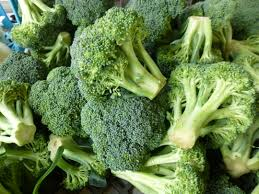
Think you’re meeting your calcium requirements from eating broccoli? If you’re a woman over the age of 60, you’d need to be eating 22 heads of broccoli each day to meet your calcium requirements!
Here’s how you can meet your calcium requirements without suffering any tummy troubles.
One in 10 Australians have lactose intolerance. Lactose is a natural carbohydrate found in dairy products. If you have lactose intolerance, it means you have a deficiency of the enzyme lactase, which is responsible for breaking down lactose into smaller more digestible compounds. Without enough lactase enzymes lactose is not digested properly and is fermented by bacteria in the large intestines resulting in symptoms such as diarrhoea, wind and bloating.
Remember that dairy is one of the five core food groups? And foods in this group (i.e. milk, cheese and yoghurt) are some of the best sources of calcium? If you are eliminating all dairy sources to avoid irritable bowel symptoms, it can become particularly difficult to meet your calcium requirements. This in turn can put you at risk of weakened teeth and bones that are likely to fracture and can leave you bed-bound for literally months.
The older we get, the more calcium we need. Women over 60 need 1300mg calcium and men over 60 need 1000mg calcium each day. Over the age of 70, men and women both need 1300mg to meet requirements and prevent extra calcium losses from bone.
So, if you are lactose intolerant, where are you going to get you calcium from? Try these suggestions:
1. Lactose free milk
Lactose free milk is still a fantastic dairy serve and it doesn’t contain any lactose! The lactase enzyme has been added to break down all the lactose present that could cause you discomfort. One cup (250ml) of lactose free milk has approximately 300mg calcium. Other milk alternatives, such as soy or almond milk are also lactose free, however they have a much lower calcium content, so look for calcium fortified varieties with at least 100mg Calcium/100ml.
2. Pot set yoghurt
Most people with lactose intolerance still produce a small amount of lactase, and can generally tolerate small amounts of lactose. The bacterial cultures that have been added and sealed into pot-set yoghurt naturally break down the majority of the lactose present. Therefore you may find that although you need to avoid a glass of milk, a tub of yoghurt won’t cause you to have any symptoms. A 200g serve of yoghurt contains ~280-300mg calcium.
3. Fish
Calcium is stored in the bones and so eating fish with their small, soft, edible bones can really boost your calcium intake without the threat of lactose. Options such as sardines, salmon and mackerel are best and can be easily prepared on high-fibre crackers, in sandwiches or in a pasta bake. 1 small tin of salmon or sardines (including bones) has approximately 200-300mg calcium per serve.
4. Nuts and seeds
Nuts and seeds are a good source of calcium and a powerhouse of other vitamins and minerals including niacin, potassium, iron, magnesium, zinc, fluoride and selenium. They also provide essential omega-3 fatty acids and fibre. There’s approximately 30-50mg calcium per 30g serve of nuts or seeds. Make sure you’re watching your portion sizes as nuts and seeds are also high in kilojoules and can contribute to weight gain.
5. Dark green vegetables
Yes, dark green vegetables are packed full of vitamins and minerals including calcium. Unfortunately, we are rarely able to absorb 100% of what is available due to other minerals and compounds such as oxalates and phytates binding to them thus rendering calcium unavailable. For example, the calcium in spinach is somewhat poorly absorbed, however broccoli, kale and cabbage are low-oxalate vegetables, and we therefore can absorb more calcium from them. However, one head of broccoli will still only provide you with approximately 60mg calcium
Click here for the article: http://www.startsatsixty.com.au/health/5-calcium-rich-foods-for-people-with-lactose-intolerance
